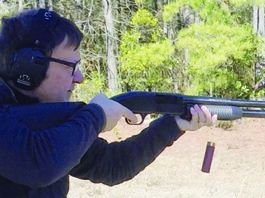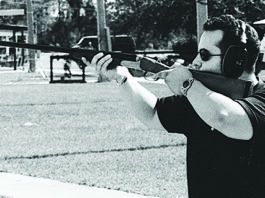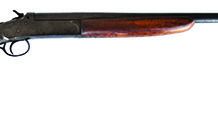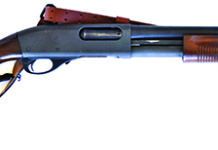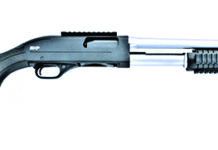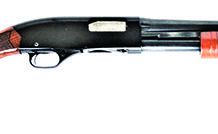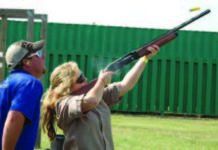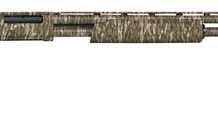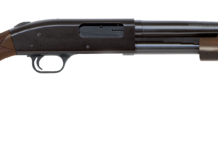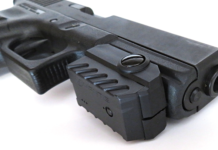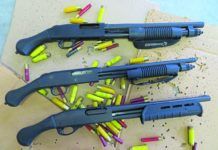Iver Johnson Champion 20 Gauge
Remington 870 Magnum 12 Gauge
Winchester SXP Marine Defender 512268395 12 Gauge
Winchester 1200 Defender 12 Gauge
A Top Youth-Shotgun Pick
.410-Bore Hunting Shotguns: Moss-berg, TriStar, & Stevens
We test a single shot, a pumpgun, and a semi-automatic head to head with the diminutive, but still effective, .410 shotshell. Even for turkeys, it's effective within its range.
VALUE GUIDE: RECENT SELF-DEFENSE SHOTGUN RANKINGS
GUN NAME
ISSUE
GRADE
COMMENTS
Mossberg 590 Shockwave Model 50657 20 Gauge, $455
Mar. 2019
A
The Shockwave in 20 gauge substantially reduces felt recoil. We liked the strapped forend.
Mossberg 590 Shockwave Model 50649 .410 Bore, $455
Mar. 2019
A
Loaded with one of the specialty 410 defense loads, this would make a good home-defense choice.
Remington Model 870 TAC-14 81145 20 Gauge, $464 …
Simple, Effective 12 Gauges: Shot-guns with a Little Bling
No, you don't ‘need' the copperhead scales of the Iver Johnson, the lustrous finish of the Mossberg Retrograde, or the minimalist stainless-and-black appearance of the RIA M5. But they are fun.
Dry-Fire Laser Training Devices
Reader Walt wonders if laser trainers can be used for air rifle and smallbore programs. Great idea — perhaps one can. Reader Mark says that where he shops, tube-mag shotguns continue to rule.
Gun Tests Ammunition Comparisons
Here's a compilation of head-to-head ammunition testing conducted by Gun Tests magazine.


























